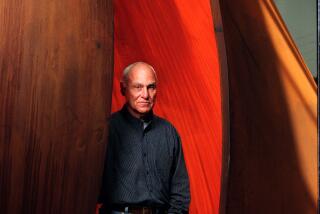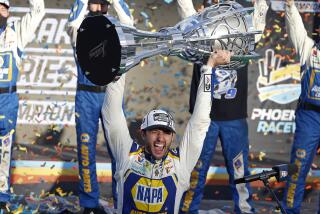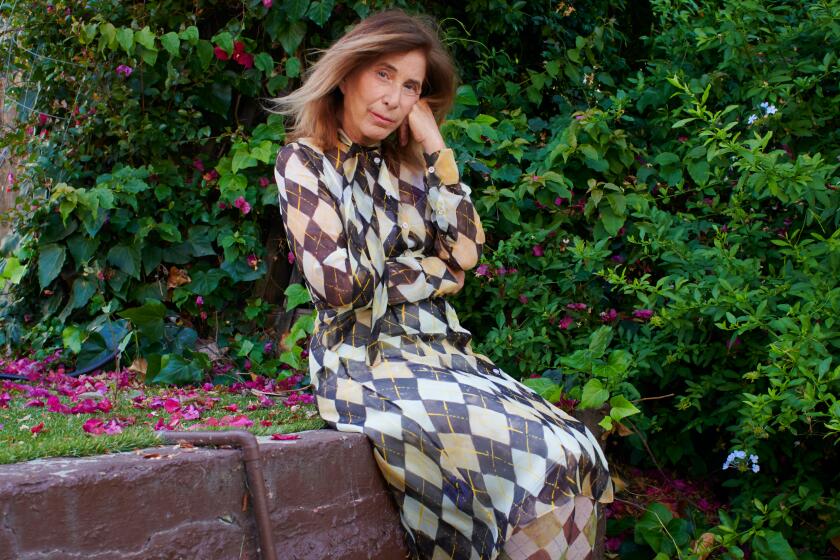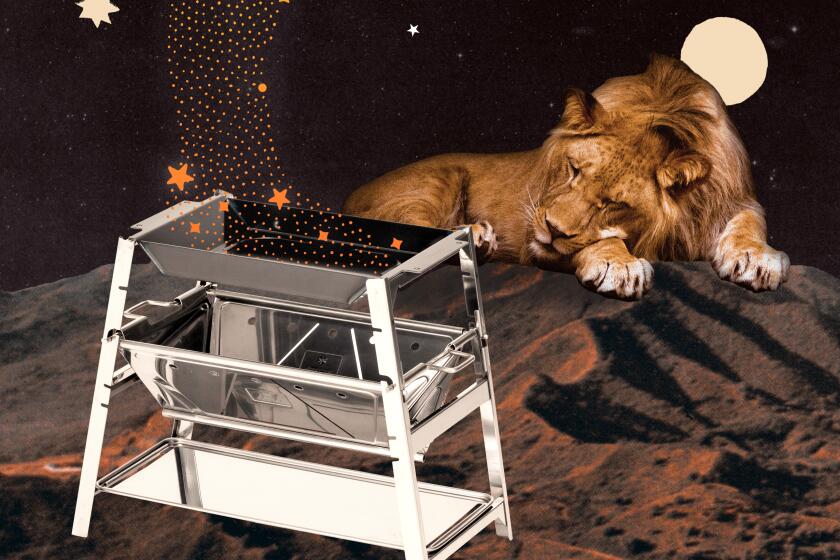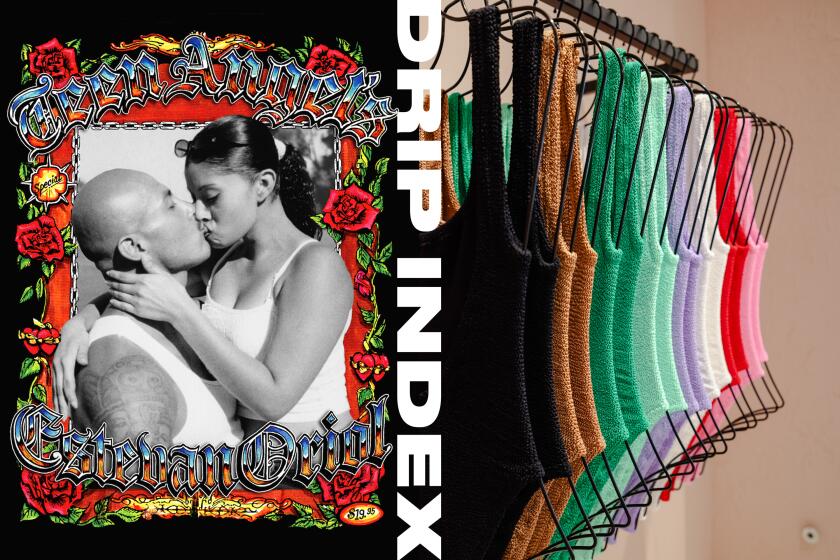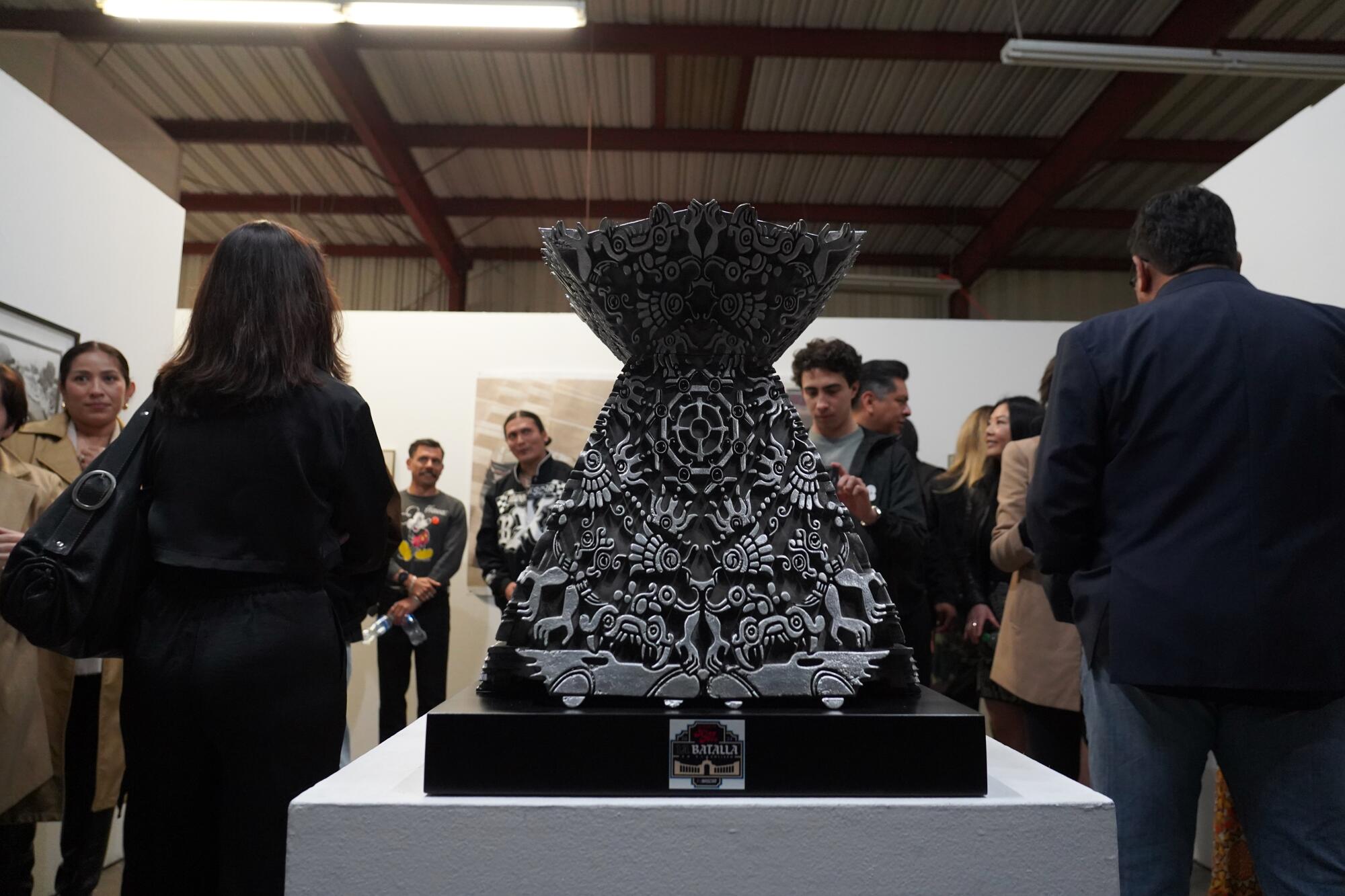
When NASCAR reached out to Ozzie Juarez, artist and founder of Tlaloc Studios, to make a trophy for the NASCAR Mexico Series race, inaugurating at the L.A. Memorial Coliseum this Sunday, he knew it had to ring true to his own style while answering one primary question: “If I was a Mexican racer and I was getting a trophy from Los Angeles, how would I want that to look?” The gleaming, two-foot tall pyramid etched with a collection of Aztec symbols feels more fine art sculpture than trophy. And with its mix of pre-Columbian references and hints of pop culture, you know it’s a piece by Juarez as soon as you lay eyes on it.
When brainstorming the trophy, Juarez scrapped 10 different sketches before landing on this current iteration. He needed to find a version that felt intentional and representative of him as an artist while still paying homage to the sport and the triumph of the drivers. “At first I was almost having nightmares about the trophy not being what I wanted it to be,” he says. “Thousands of people are going to look at this trophy, either on camera or online. I want this to be as special as possible.”
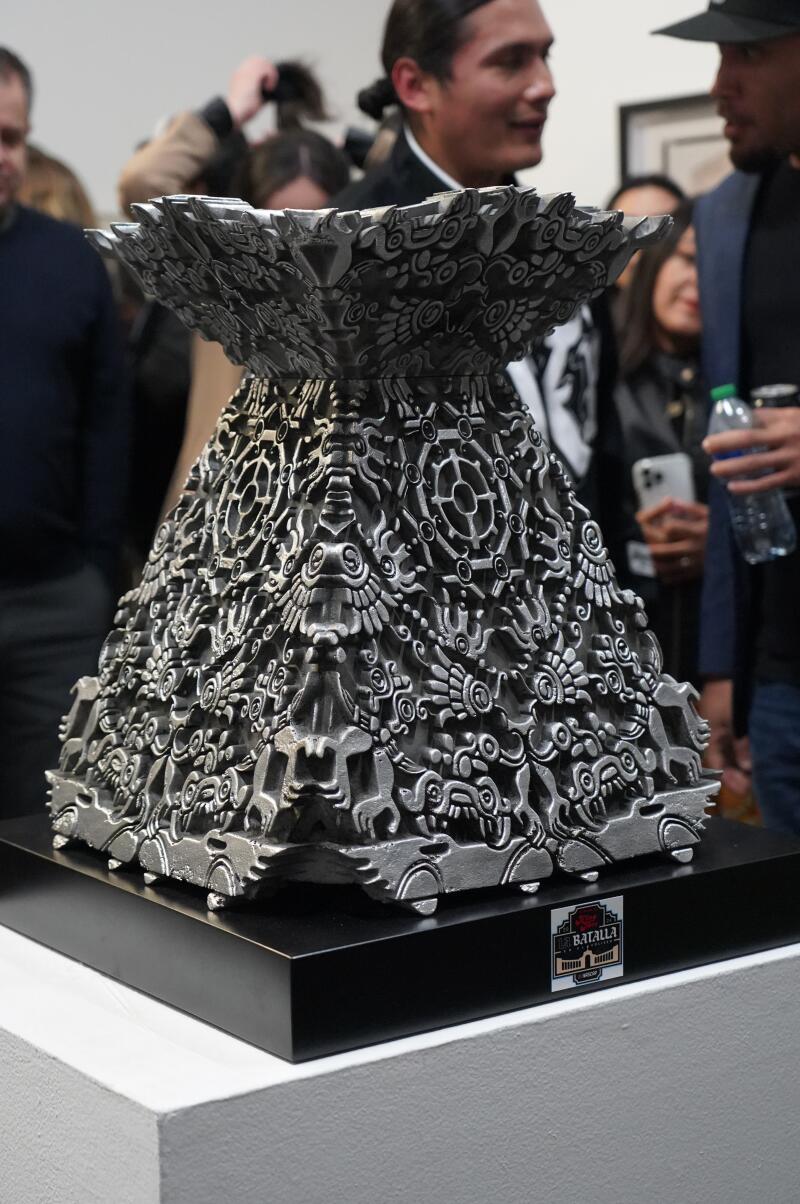


The gleaming, two-foot tall pyramid etched with a collection of Aztec symbols feels more fine art sculpture than trophy. (Kaela Swanson / NASCAR)
When the trophy was unveiled at an event at Tlaloc Studios this week, the crowd was quite literally drawn toward the piece — with more than one person asking Juarez if they could touch it. There is a clear magnetic pull about the structure, which sits at 90 inches wide. It’s 85 pounds, cast in an oxidized aluminum. And because it’s a piece by Juarez, it also plays with juxtaposition — Aztec symbolism blends with references from NASCAR’s heritage, including hot rod silhouettes at the base of the trophy taken from a vintage NASCAR logo, and a single gear in the middle of the pyramid’s walls that is meant to represent speed. The mandala-like swirl of 3-D imagery on the metal pays homage to Tlaltecuhtli, Xochitl, Ehecatl, Tlaloc, Ollin and the Aztec glyph for flame — a combination of deities and symbols that represent earth, plants, wind, rain, earthquakes and fire, says Juarez.
All of these elements together result in a piece that feels electric and potent. A representation of nature, creation and source energy. The top of the trophy is detachable, a piece that’s meant for the winner to hold up over their head after coming in first. “There’s all different imagery combined together to create these bigger symbols,” says Juarez. “I wanted this trophy to be received and give the winner some power.”
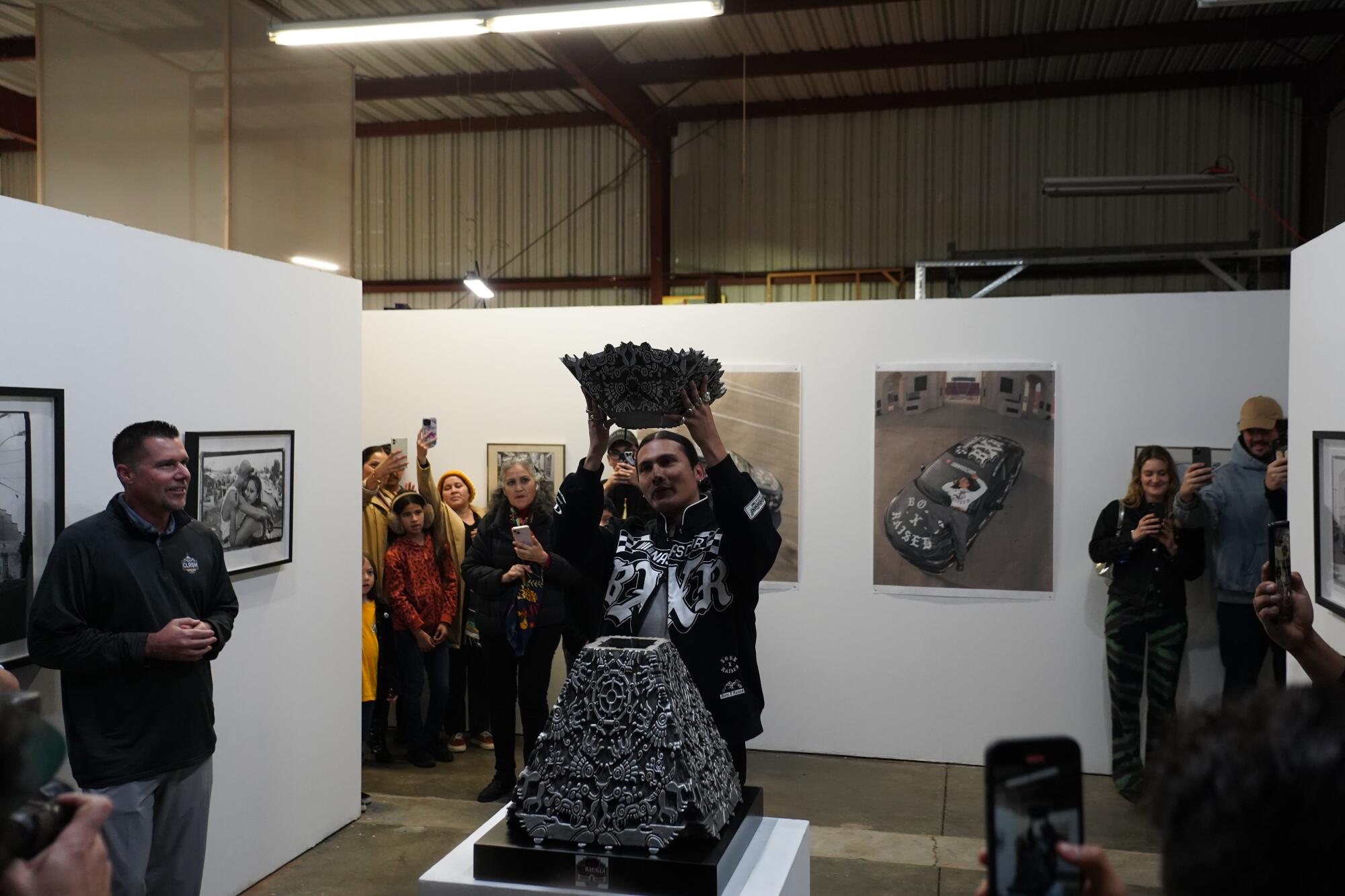
The NASCAR Mexico Series race — also dubbed the King Taco La Batalla en El Coliseo — having its inaugural moment at the Coliseum feels equally symbolic for Juarez, who is from South Central and understands the inextricable connection that Latinos have with both the city and the sport. “The reason why I went with these symbols and the language that I did is because Los Angeles is so much about Mexican culture — obviously it’s a melting pot, we have everything here — but Latino culture is really bringing something to the table.”
Juarez wanted the trophy to feel like a totem that represents where L.A. meets Mexico — honoring both cultures at once. “He put some real thought into it not only culturally, but also functionally,” says Dave Allen, track president for NASCAR’s West Region. NASCAR has commissioned artists to create trophies in the past, but Allen says he’s never seen a trophy like this one. “You want the drivers to be racing for something beyond just bragging rights. You want them to race for something that they can take home with them too. I think this trophy did that. I’m sure they’ll all be vying for it.” (NASCAR also collaborated with L.A. brand Born X Raised, which released an apparel collection and campaign shot by Carlos Jaramillo featuring India Love and 03 Greedo for the Busch Light Clash, which will follow the NASCAR Mexico Series race at the Coliseum on Sunday.)
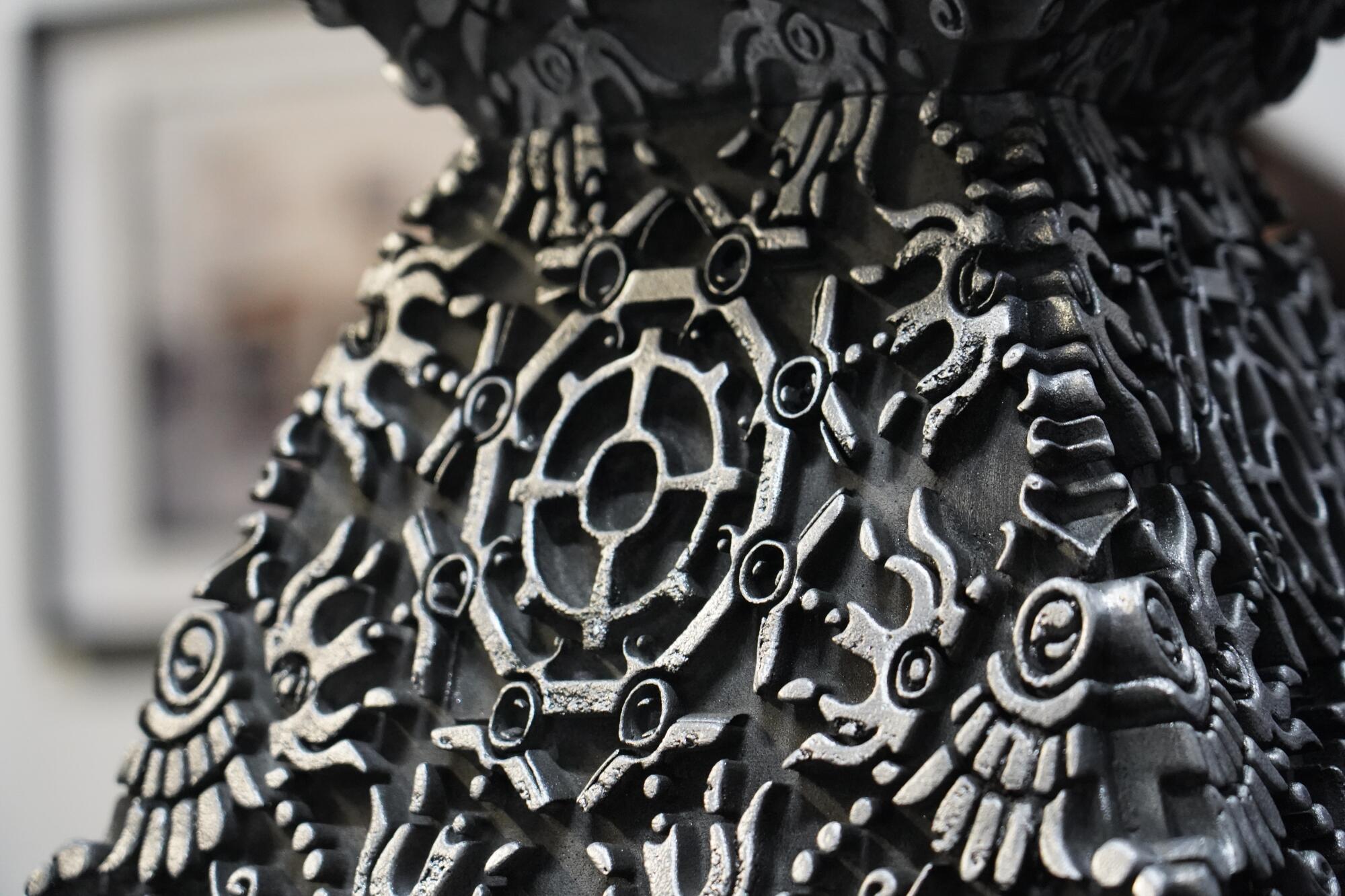
Juarez is beloved across L.A. for his distinct style and multi-hyphenate practice — from painting to sculpture — as well as his ability to create community and space. The opening for Juarez’s latest solo show, “翱齿滨-顿滨翱厂,” and curated group exhibition, “Angelitos De Plata,” at Charlie James Gallery last month was so packed that the Chinatown space was radiating with body heat on a particularly cold night. Many L.A. artists consider Tlaloc Studios a home base.
At the unveiling for the trophy, King Taco, a partner for the NASCAR Mexico Series race, was catering. There was a photo exhibition by Gregory Bojorquez and Jaramillo on the walls and a race car decked out with Born X Raised decals in the lot. Ni?o Genesis was behind the decks, playing classics like Ramón Ayala’s “Un Rinconcito En El Cielo.” Juarez took the cloth off the trophy and the crowd erupted in applause, followed later by fireworks that shot up in the night sky. The celebration felt like the trophy itself, which Juarez describes as “kind of a perfect fusion of Mexico and Los Angeles.”

